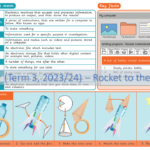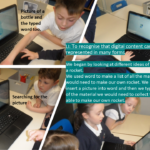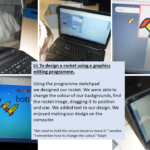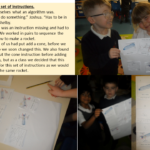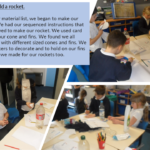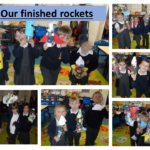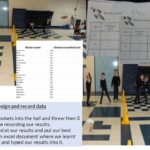Today the children started looking at colour in art. We named the 3 primary colours (red, blue and yellow) and found out they are special, as they cannot be made by mixing other colours together.
To support this the children looked at the artist Piet Mondrian as he mostly used primary colours in his artwork.
The children then had a go at creating their own version of one of his famous paintings by using geometric shapes mostly using horizontal and vertical lines. Here are just a few examples of their artwork, along with the original artwork.
Author: year1
Term 4 Curriculum overview
Computing Term 3
Gymnastics
This term we looked at gymnastics and looked at at being able to balance and hold a number of different shapes. The children learnt, developed and applied these shapes and travelled on the floor and apparatus through focused skill development. These shapes included straight, dish, arch, tuck, pike, straddle and star shapes.
Man on the Moon
We began the term looking at the image of the man above and the children looked carefully at the image, identifying any clues they could find that might tell us something about him. This then led us onto thinking about questions we could ask him if we met him and we all composed letters to him. Thankfully Bob replied and answered some of our questions which allowed us to begin to build a picture about him but luckily he also left the book ‘Man on the Moon’ by Simon Bartram that we could find out more about him. This all allowed us to understand him more and think about adjectives to describe him.
After reading the whole book we learnt what a day in the life of Bob was like and with the use of a bit of role play to help remember the events of his day in the correct order. The children then looked at writing in the past tense and used this to pretend they were him in order to write a diary entry.
The children were so interested in the topic of space and ‘The Man on the Moon’ so we began to research the FIRST man on the moon. We looked at reading comprehensions to gather information and even looked at the ‘Little People Big Dreams book about Neil Armstrong’. We learnt all the key events of his life and noted this information down. With this information, we then created our own fact files on Neil Armstrong.
Geography – What is it like to live in the United Kingdom?
Within Geography this term we have focused on looking at aerial maps. We began the term by exploring atlases and other maps, including tube maps, local maps and maps of London. Then as a class we looked at google Earth to identify where in the world the United Kingdom is. We then zoomed into the UK, then onto the county of Kent, then closer still into the area of the Marsh. Then finally we zoomed into the aerial map of New Romney. The children then looked carefully at what features they could recognised which led them onto labelling a local map pf features they knew.
After this we then focused on aerial maps within school and looked at a basic aerial map of the classroom. The children used this to support making messy aerial maps of the classroom using a variety pf objects. They all had lots of fun deciding which objects would present different things within the classroom.
We then began to focus on the playground and identified the features we could see. In pairs we then created our own aerial maps with symbols to represent features we could see. We tried to use positional language to support our partners to ensure the features were located in the correct places. Some of the children were even able to create a key to identify what these symbols represented.
At the end of the term the children completed surveys on what they liked and disliked about the playground and identified some of the things they wished could be on there. Using these surveys the children then created their own aerial map of what they would like the playground to look like.
Astrodome
This term we are looking at space and today the children were very excited to visit the Astrodome. We entered a spacecraft and blasted off into space. We learnt about the planets and their order from the sun. We flew around the Earth and landed on the moon. (It was very dark in there and the camera struggled capturing the amazing things the children saw and experienced within the dome).
Term 3
Welcome back and Happy New Year!
Below is the overview for the term to show some of the things the children will be covering in the next few weeks.
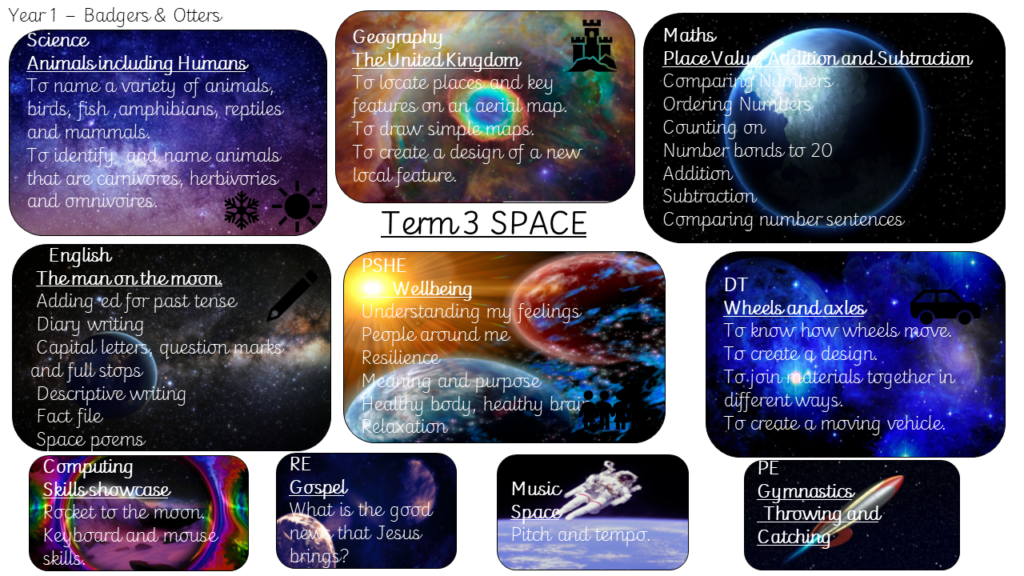
This term within Maths we will be focusing on number bonds. The children will be using their knowledge of number bonds to 10 to support working out related number bonds to 20.
Victorian School visit
As part of our topic this term we have been looking at toys from the Victorian times. Today the children got to experience a traditional Victorian classroom and learnt that they were very strict compared to now and they had very harsh punishments.
The children were invited to sit at the desks wearing Victorian hats and asked to practise writing their names on blackboards using chalks. They realised that they needed to ensure that they listened carefully otherwise if not, in the Victorian times they would have been punished by standing at the front of the class with a cloth over their heads or having to wear the dunce hat. No slouching was allowed and so in the past they would have had to wear a back straightener to correct or teach them not to slouch. Left hand writing was not allowed and so those that tried would have to wear a left hand lock.
Luckily within the old school they also have a number of Victorian toys which the children learnt about and even managed to play with for a short time. We’re not sure who had more fun playing with the toys the children or the parent helpers. Big thanks to all those that helped with the trip.










